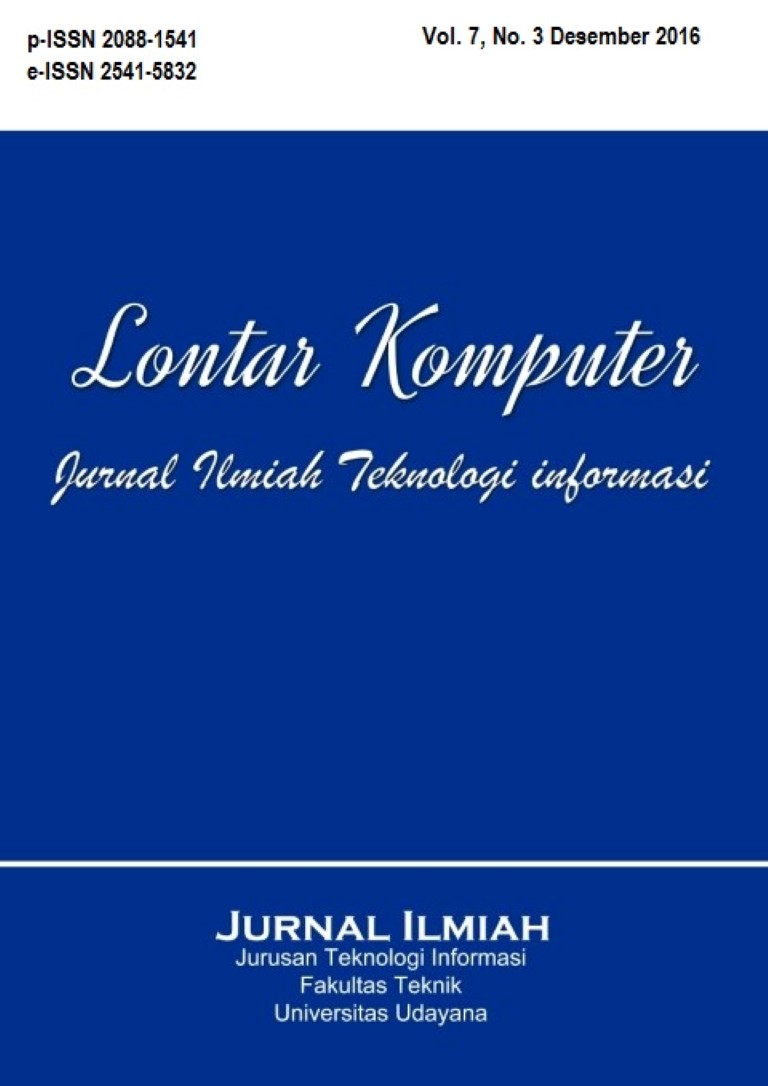Penerapan Mobile Crowdsourching Untuk Estimasi Waktu Kedatangan Bis Berdasarkan Informasi Masyarakat
Abstract
Trans Jogja is a mass transportation system operating in Yogyakarta City, where the system has problems with the timeliness of departure and bus arrival, so the bus arrival schedule can not be ascertained. So, this study designs the application of mobile crowdsourcing concept to assist Trans Jogja bus users in terms of bus arrival estimation. The user broadcasts the location or when the passenger goes up so that the end-user passengers can get an estimate of how long the bus will come. The method used is qualitative method by collecting primary data source (interview, observation and literature study). This research involves passengers of Trans Jogja bus android smartphone users. Passengers post the status using the app to send the bus location. Other passengers who have been waiting at the bus stop can know the bus arrival time at the bus stop. Based on Performance test result, it can be obtained the average difference of bus arrival time in application with bus arrival time of survey result in line 1A is 1.86 minutes.
Downloads
References
[2] “Bus Umum yang Aman, Nyaman, dan Terjangkau,” TRANS JOGJA, Yogyakarta, 2013.
[3] B. Rahmawan, “Membangun Portal Web Crowdsourcing Health Treatment Dengan Menggunakan Metode Iterative Incremental Dan Metode Pencarian Vector Space Model,” Institut Teknologi Telkom, Bandung, 2013.
[4] L. Fanani, A. Basuki, and D. Liang, “Bus Arrival Prediction – to Ensure Users not to Miss the Bus,” International Journal of Electrical and Computer Engineering (IJECE), vol. 5, no. 2, pp. 2088–8708, 2015.
[5] Y. M. P. Jalni and H. Yuliansyah, “Rancangan Aplikasi Web Monitoring Estimasi Kedatangan Bus Trans-Jogja Berdasarkan Lokasi Bus dengan GPS Smartphone,” in Simposium Nasional Teknologi Terapan (SNTT) 3, 2015.
[6] K. E. Watkins, B. Ferris, A. Borning, G. S. Rutherford, and D. Layton, “Where Is My Bus? Impact of mobile real-time information on the perceived and actual wait time of transit riders,” Transportation Research Part A Policy Pract., vol. 45, no. 8, pp. 839–848, 2011.
[7] J. Zhang, L. Yan, Y. Han, and J.-J. Zhang, “Study on the prediction model of bus arrival time,” in Proceedings - International Conference on Management and Service Science, MASS 2009, 2009.
[8] R. Mishalani, M. McCord, and J. Wirtz, “Passenger Wait Time Perceptions at Bus Stops: Empirical Results and Impact on Evaluating Real - Time Bus Arrival Information,” Journal of Public Transportation, vol. 9, no. 2, pp. 89–106, 2006.
[9] M. Andriansyah, T. Oswari, and B. Prijanto, “Crowdsourcing: Konsep Sumber Daya Kerumunan dalam Abad Partisipasi Komunitas Internet.”
[10] J. Howe, “Bringing Essential Knowledge & Book Summaries to High Achievers C ROWDSOURCING Why the Power of the Crowd is Driving the Future of Business,” New York: Crown Business, p. 320, 2008.
[11] D. Estrin, “Participatory sensing: Applications and architecture,” IEEE Internet Computing, 2010.
Keywords
The Authors submitting a manuscript do so on the understanding that if accepted for publication, the copyright of the article shall be assigned to Jurnal Lontar Komputer as the publisher of the journal. Copyright encompasses exclusive rights to reproduce and deliver the article in all forms and media, as well as translations. The reproduction of any part of this journal (printed or online) will be allowed only with written permission from Jurnal Lontar Komputer. The Editorial Board of Jurnal Lontar Komputer makes every effort to ensure that no wrong or misleading data, opinions, or statements be published in the journal.
 This work is licensed under a Creative Commons Attribution 4.0 International License.
This work is licensed under a Creative Commons Attribution 4.0 International License.























